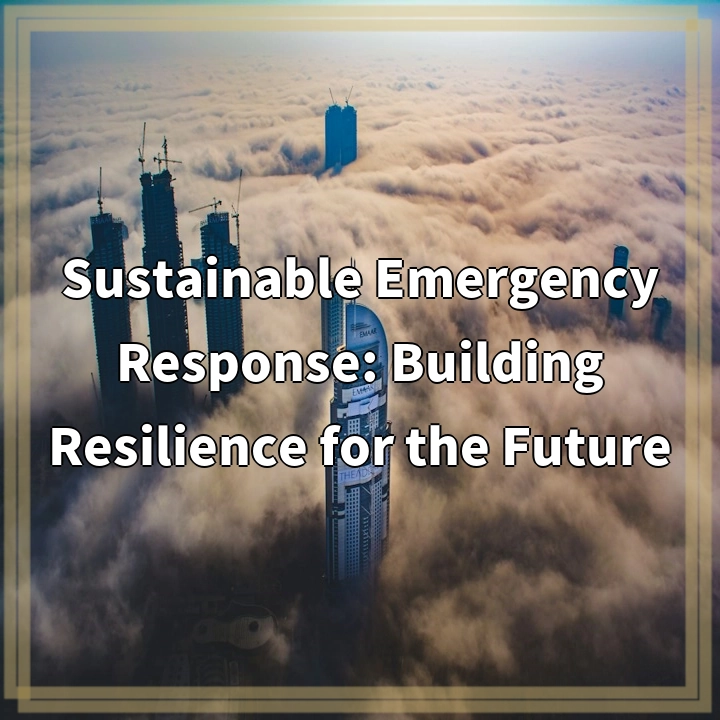
What is Sustainable Emergency Response?
Sustainable emergency response refers to the application of sustainable practices in disaster management and response efforts. It involves adopting environmentally friendly solutions, reducing carbon footprint, and prioritizing long-term resilience and preparedness. This approach ensures that emergency response activities not only address the immediate needs of affected communities but also minimize negative environmental impacts and contribute to overall sustainability goals.
Real-World Problems Associated with Sustainable Emergency Response
1. Limited Resources:
In many disaster-prone regions, there is a lack of adequate resources and infrastructure to support sustainable emergency response. Limited availability of renewable energy, water, and sanitation facilities can hinder efforts to implement sustainable practices during emergencies.
2. Logistic Challenges:
Coordinating sustainable emergency response efforts can be logistically challenging, particularly in large-scale disasters. Efficient transportation, proper waste management, and ensuring the availability of essential supplies while minimizing environmental impacts require careful planning and coordination.
3. Balancing Short-Term Needs with Long-Term Sustainability:
During emergencies, there is often a trade-off between meeting immediate needs and considering long-term sustainability. Urgent needs for food, shelter, and medical assistance may require certain short-term solutions that may not be environmentally sustainable or contribute to long-term resilience.
4. Awareness and Education:
A lack of awareness and understanding about sustainable emergency response practices can be a significant hurdle. Proper education and training of emergency personnel and affected communities are essential to promote the adoption of sustainable methods and to ensure effective implementation.
Addressing these real-world problems requires collaboration and innovation between various stakeholders, including government agencies, non-governmental organizations (NGOs), local communities, and private sector entities. By integrating sustainability principles into emergency response strategies, we can build resilience for the future and mitigate the environmental impacts of disasters.

Solutions for Sustainable Emergency Response
1. Resource Mobilization:
Efforts should be made to mobilize resources, including renewable energy technologies, water purification systems, and sustainable waste management solutions, to ensure the availability of essential resources during emergencies.
2. Enhanced Logistics:
Improved logistics planning and coordination can help address the challenges associated with sustainable emergency response. This includes optimizing transportation routes, prepositioning supplies, and establishing efficient waste management systems.
3. Integrated Approaches:
Integrating short-term emergency response needs with long-term sustainability goals is crucial. By identifying innovative solutions and technologies, it is possible to meet immediate needs while minimizing negative environmental impacts and contributing to long-term resilience.
4. Education and Training:
Increasing awareness and providing training on sustainable emergency response practices is vital. This includes educating emergency responders, community members, and decision-makers on the importance of sustainability, as well as providing guidance on implementing sustainable solutions during emergencies.
By implementing these solutions, we can enhance the sustainability and resilience of emergency response efforts. Sustainable emergency response not only helps meet immediate needs during crises but also contributes to long-term environmental and social well-being, building a more resilient future.















